
Changing Faces India FAQs

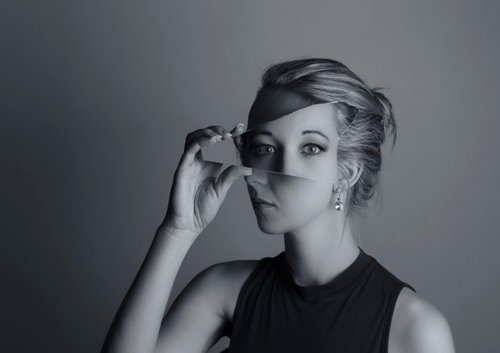
Thousands of people across India have disfigurement to their face, or body. Causes include craniofacial disorders, burns, traffic accidents, and other trauma. Treatment of cancer o r other illness and injuries can also results in scarring and irregular features.
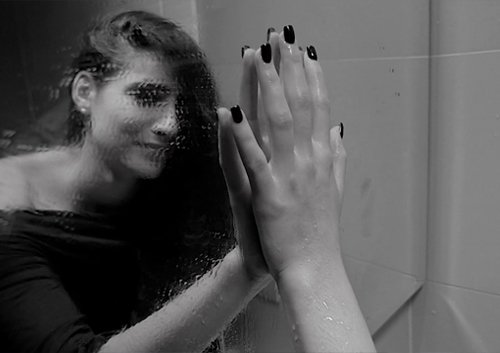
If you have disfigurement, you can face discrimination because of the way you look. You might be stared at, bullied and avoided, specially at school and public places. You may feel isolated and find it easier to hide away, convinced that no one will ever like you and that you have little chance of leading a successful life. Parents and families may not always know how to help, while others may be unsure how to react when meeting you for the first time.
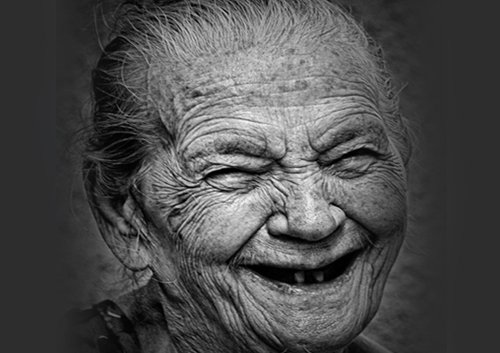
Changing face India supports and represents children, young people and adults with disfigurement of all kinds whether present at birth or acquired later. Our work complements medical, surgical, artistic and technical treatments by addressing the psychological and social challenges posed by disfigurement.
For people having disfigurement, reconstructive surgery may not always be an option. In such instances, a prosthesis may be selected as the appropriate alternative and treatment of choice. For those patients who wear a prosthesis, it is vital that it is both life like and stable With today’s silicon materials, it is possible to make a prosthesis so lifelike that it is difficult to tell it apart from the rest of the body – whether it be an eye ,ear, nose, breast, figure – even from close-up! The prosthesis is custom made and coloured for each patient. The doctor who makes the prosthesis uses different shades of color and other methods to closely match each person’s skin. To make an excellent prosthesis requires considerable skill built on traning and experience.
Not only looking natural, the prosthesis must stay in place so that people can carry on with their normal day-to-day lives with confidence.
Congenital or acquired loss of body parts is of common occurrence and replacement of such parts for restoring their lost function and esthetics is done by using various bio-compatible materials. Proper assessment of the disfigured body parts and a feasible approach to rehabilitating them has for long, been the target of clinical maxillofacial prosthodontics.
The rehabilitation of a patient with ear defects is a challenging task. An alternative to surgical reconstruction is the creation of a silicone auricular prosthesis. The replacement of anatomical parts is an art and science. These prostheses provide a cost-effective and an acceptable means of camouflage for patients who are disinclined to surgical reconstruction.

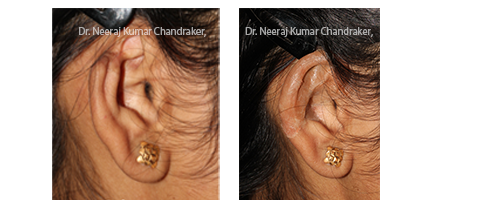
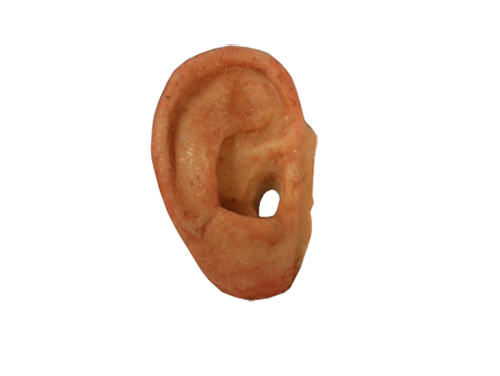
Loss of eye is emotional and physical problem to the patient. Person losses this valuable gift of god due to trauma, tumor, infection, congenital abnormality. An orbital prosthesis is created to restore a more normal anatomical structure and cosmetic defet created by these conditions in a person.
Conventional or implant retained orbital prostheses may be indicated, with or without plastic surgical intervention, to restore the appearance of the patient. Orbital prostheses fabricated from silicone, and retained by mechanical means such as spectacles, or adhesives, present an economically viable treatment option for patients who cannot afford implant retained prostheses.


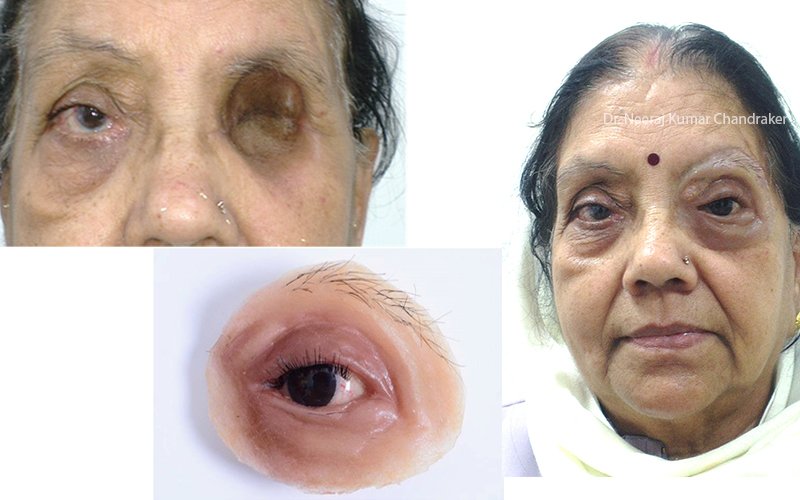
An ocular prosthesis, artificial eye or glass eye is a type of craniofacial prosthesis that replaces an absent natural eye following an enucleation, evisceration, or orbital exenteration. The prosthesis fits over an orbital implant and under the eyelids
Defects of the eye may follow removal of a part of or the entire orbit. This results in the patient becoming visually, esthetically and psychologically handicapped. Restoring the defect with a silicone- or acrylic-based prosthesis not only restores esthetics but also gives back the lost confidence to the patient. This is a case report of a patient with a 'pthisical eye' and details the steps in fabrication of an ocular prosthesis. Particular attention has been given to the laboratory process in this technique to minimize the residual monomer content in the artificial eye.
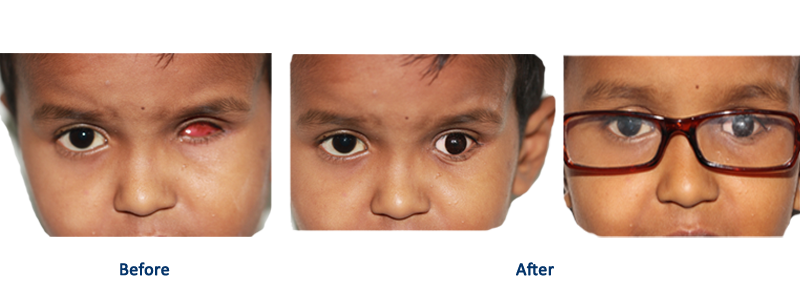
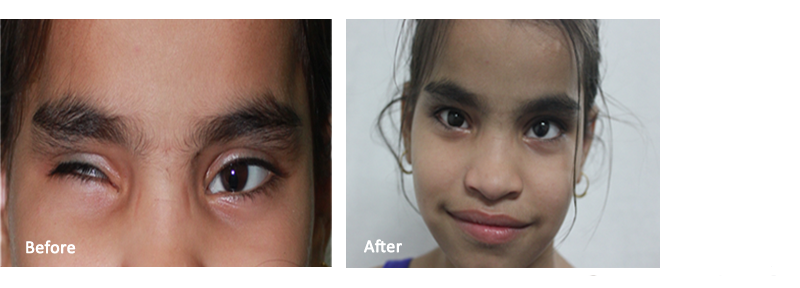
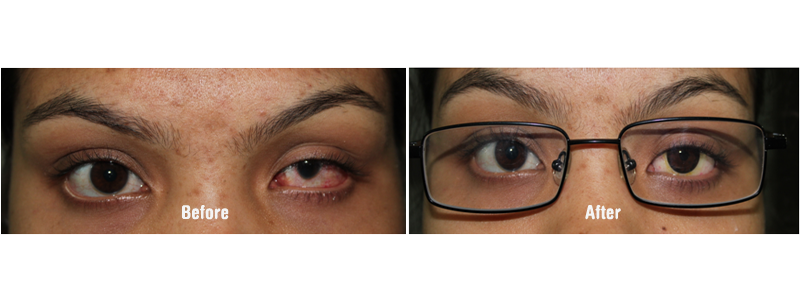
Breast – Our custom breast prosthesis is an alternative to surgery that every breast cancer survivor should know about. Our non-invasive process will recreate the shape and appearance of your breast. It is light-weight and will remain securely in position allowing you to return to most of the clothing styles that you enjoy. We will recreate your breast without the cost, risk of pain, infections or other complications that can be associated with surgical reconstruction.
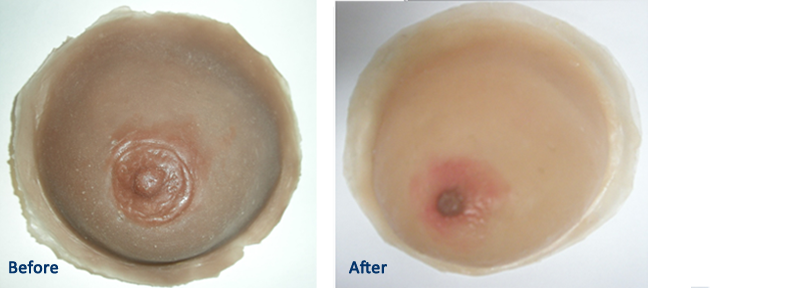
Nipple/Areola prostheses (prostheses is the plural of prosthesis) are made of silicone by breast prosthesis manufacturers and anaplastologists for breast cancer survivors who were treated for breast cancer with a mastectomy

Complete or partial fingers are the most commonly encountered forms of partial hand losses. ... This clinical report portrays a method to fabricate silicone rubber prosthesis for a patient who has a partial finger loss caused due to trauma.
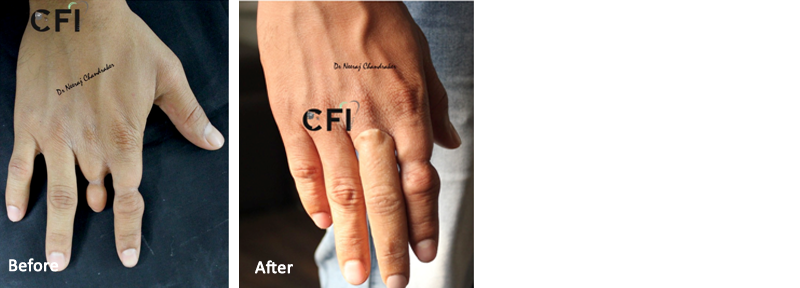
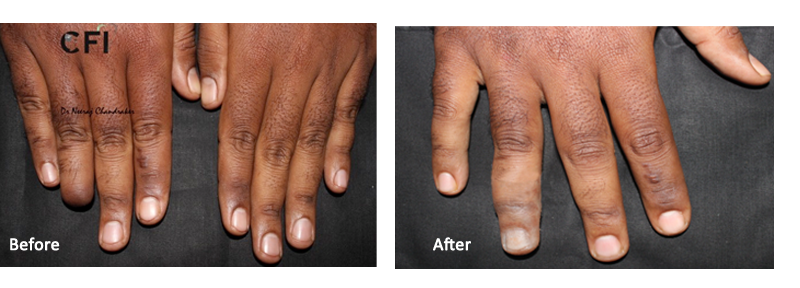
Toe prosthesis is generally attached by suction.The silicone prosthesis protects the sensitive tip of the toesfor further trauma.The silicone toe prosthesis is very important in the psychological and rehabilitation process of the patient.


Obturator is a prosthesis used to close a congenital or acquired tissue opening,primarily of the hard palate &/or contiguous alveolar structures.Prosthetic restoration of defect often includes use of a surgical obturator,interim obturator & definitive obturator.
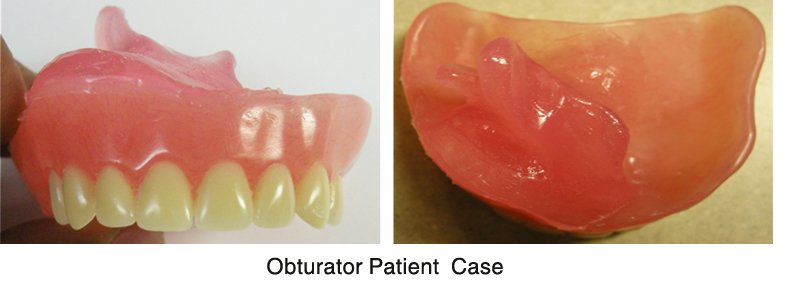
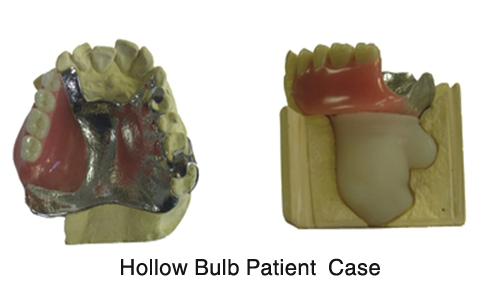
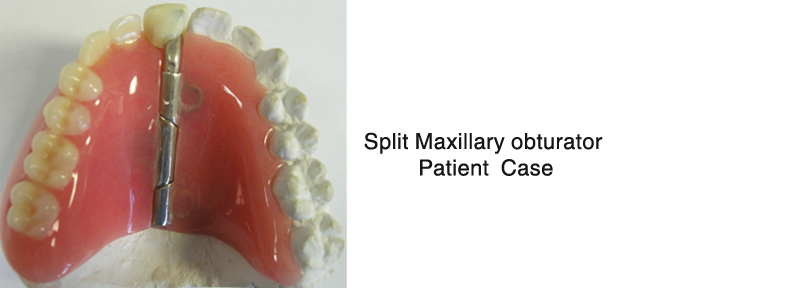
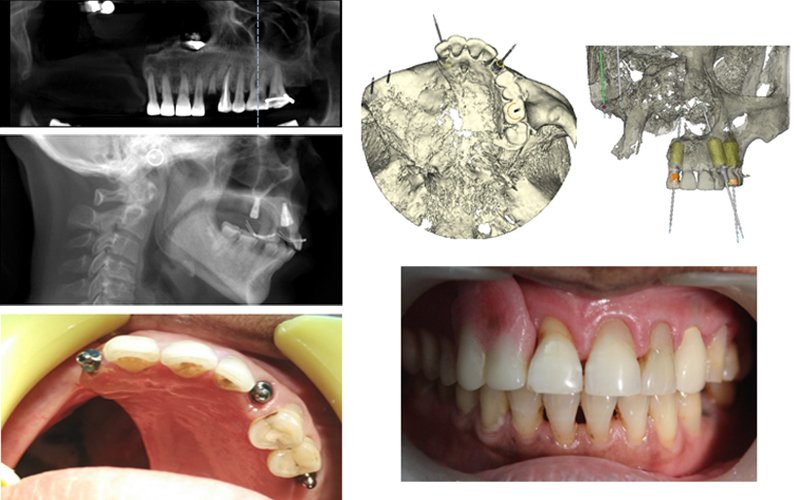
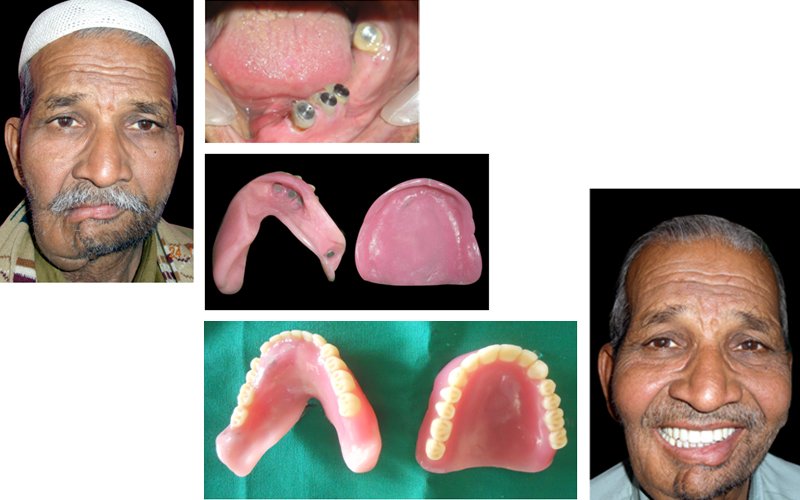
Feeding appliances are often required by such patients. A feeding appliance is a device that creates a seal between the oral and nasal cavities and helps the infant to express milk.
The feeding plate is also a type of obturator which is used to close defect created by cleft palate. Its use is followed by surgical intervention to close the congenital defect.
Nasoalveolar molding (NAM) can be done effectively to reshape the nasal cartilage and mold the maxillary dentoalveolar arch before surgical cleft lip repair and primary rhinoplasty. Presurgical NAM helps as an adjunct procedure to enhance the esthetic and functional outcome of the surgical procedures.
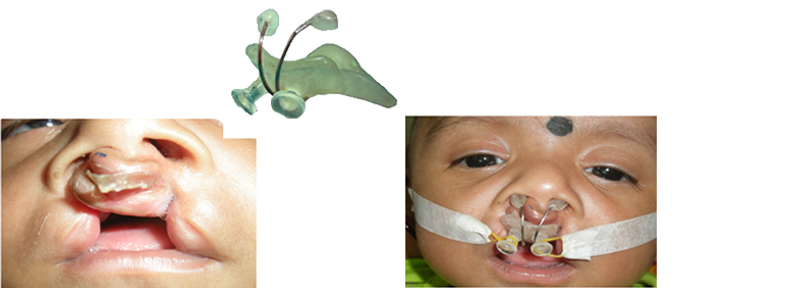
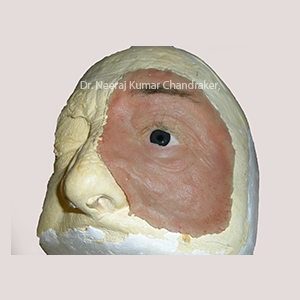
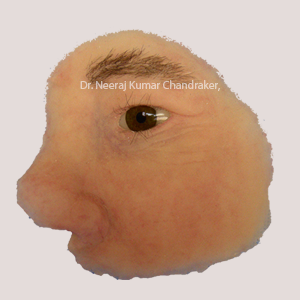
IMPLANT SUPPORTED FINGURE PROTHESIS - An imputed figure or hand can be restored with function and realistic esthetic appreance
A child born with cleft palate may experience difficulties while feeding. Early surgical treatment may need to be postponed until certain age and weight gain of the infant. The case presented here is of a 1-month-old neonate born with cleft palate, assisted with a new feeding appliance made with ethylene vinyl acetate using pressure molding technique to aid in proper feeding. The patient's weight and health significantly improved after the insertion of obturator. The advantages of this material included being lightweight, moldability, good palatal fit and decreased soft tissue injury.

